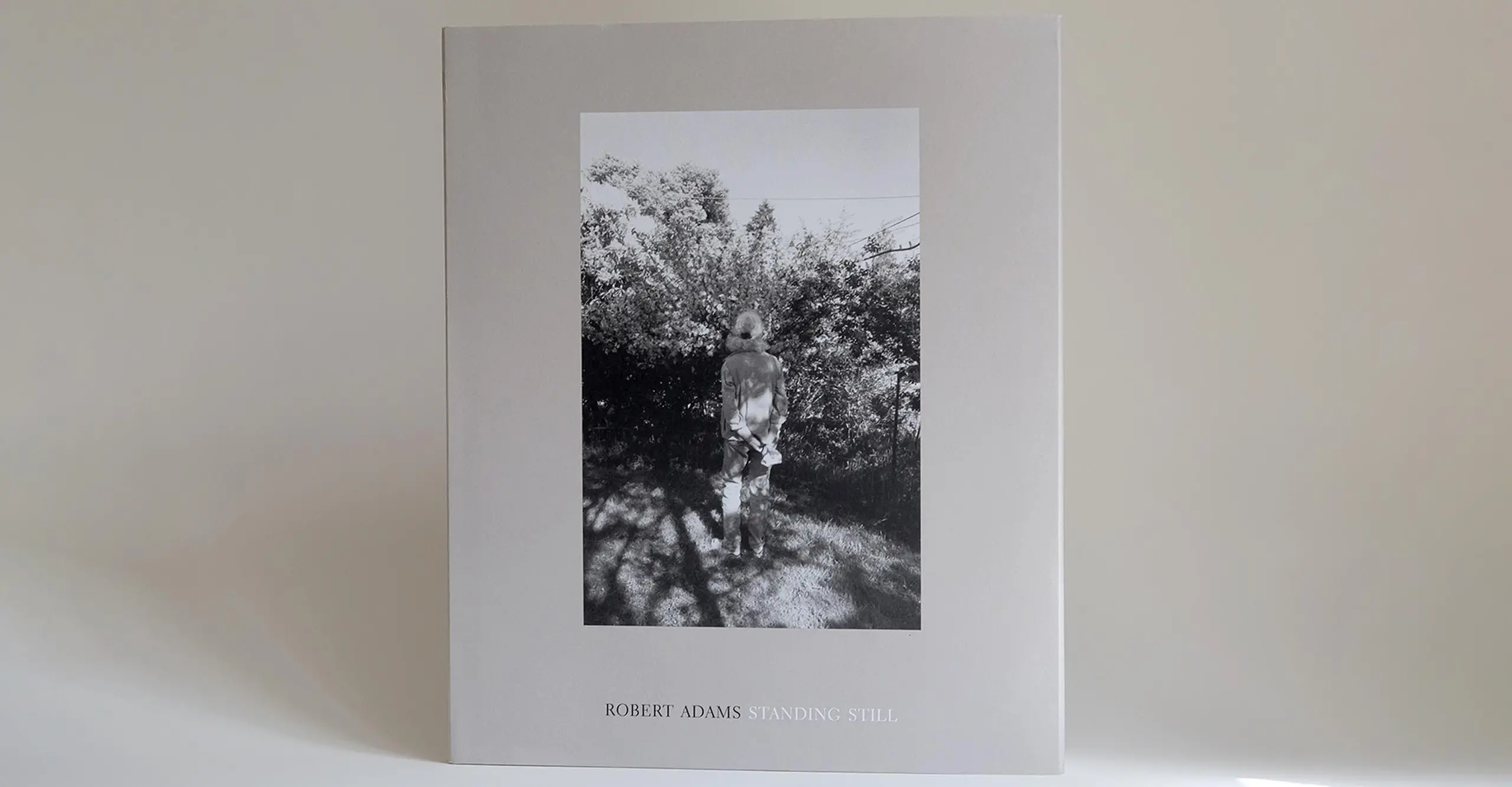Standing Still is a book of photographs made in the front yard of American landscape photographer Robert Adams. It is a modestly sized suburban garden, “thirty feet by sixty feet deep”, overlooked by power lines and “closely spaced” neighbours. The book follows the changing light and seasons. In Adams’ garden, “each day can be the first day.”
The book begins in spring, the garden is coming into bloom. Looking over her shoulder we see the blossom mirrored in the curly white hair of Adams’ wife, Kerstin. The summer sun bathes the garden in light, making the trees cast latticed shadows in the grass. Autumn is marked by the emergence of a deer at the garden’s edge, outlined by light in the low sun. Winter arrives and there is a cool mist in the air. Turning a page, we feel the rush of excitement of looking out of the window to discover the garden blanketed by snow.
Over the course of his career, Adams has photographed the American West extensively, documenting both the natural landscape and its development. Standing Still, which was made in Adams’ home in Astoria, Oregon is in some ways a continuation of his documentation of the West. The book gives us the opportunity to discover Adams’ daily experience of the place he has so compassionately photographed.
Standing Still reflects Adams’ meditative approach to looking at nature, his attention to the subtle interplay between flora and fauna, light and dark, and human impositions on the landscape. The photographs show how the balance of the relationships between these elements affects our perception of our surroundings. Through his skilful use of composition and sequencing, Adams gives us the feeling of being a guest at his home. We have an awareness of where photographs have been taken from, looking out of the window or crouching in the undergrowth. As the book progresses we develop a familiarity with Adams’ garden, a sense of acquaintance which builds and is undone as the changing conditions of each season force us to look at the garden anew.
It is interesting to consider the book, which was released in 2020, in the context of the pandemic. Whilst it is unclear when the photographs were made, the book and even its title, Standing Still, are evocative of the strange way some of us have experienced this time. In a moment of heightened anxiety and trepidation about the future, Adams’ photographs are a celebration of his garden. They find hope in the inevitability of its change, and of the beauty, it will bring. The book ends with a quote from Antonio Machado, “The Spring has arrived. No one knows what happened.”
- Jackson Mount


